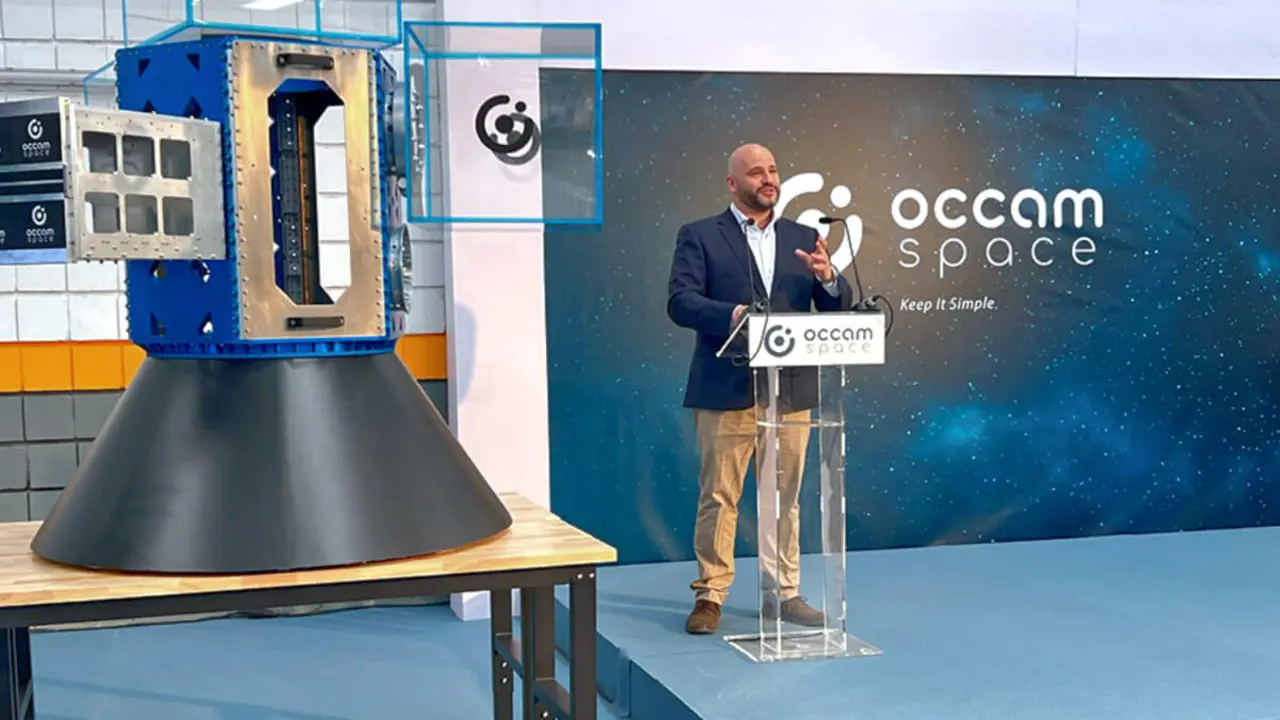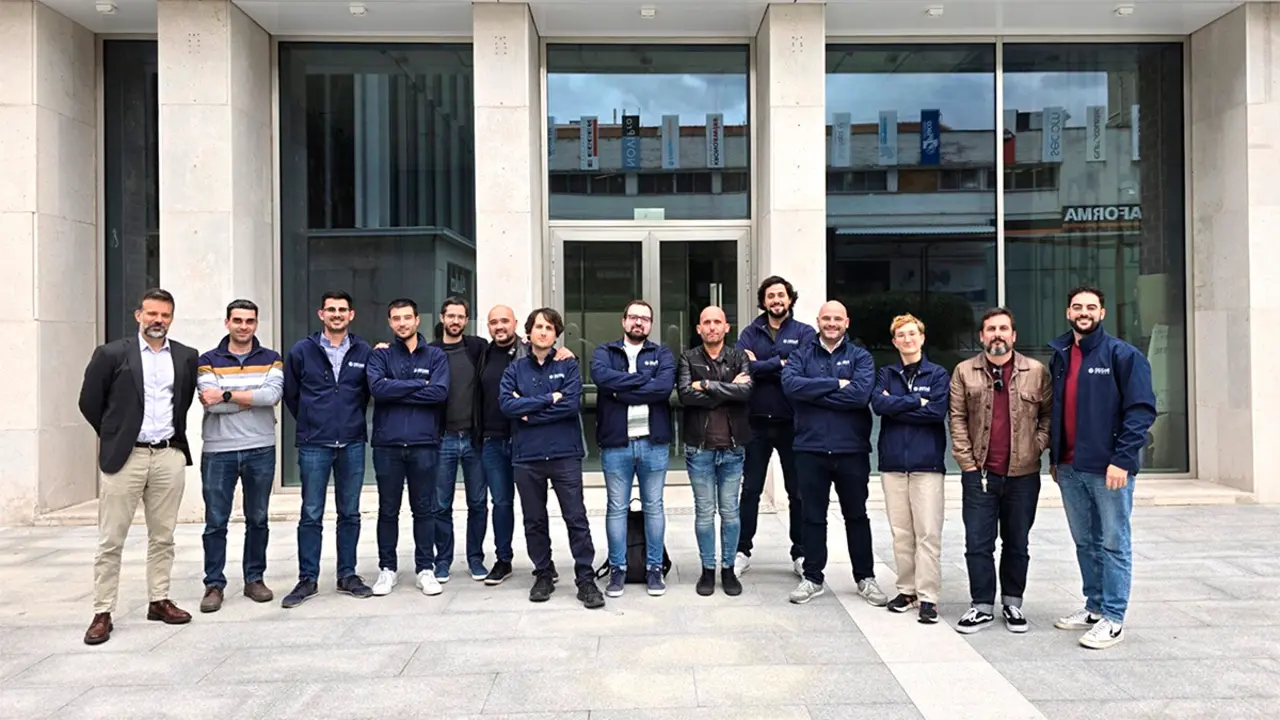This is the first woman to reach the Moon... without stepping on it

The first woman to travel to the Moon already has a name and surname. Her full name is Christina Hammock Koch and she has been chosen to take part in Artemis II, the manned mission that represents the return of American astronauts to the moon after an absence of more than half a century.
Aged 44, married and childless, Christina Koch has been chosen from a group of 16 women who are among the 40 active members of the Astronaut Corps of the US National Aeronautics and Space Administration, NASA.
Christina Koch will be accompanied on her trip to the moon by three men. All three are military men, but two of them are American - one of them black - who have already flown into space and spent time on the International Space Station (ISS), as has her companion. This is not the case for the fourth crew member, an astronaut from the Canadian Space Agency, for whom this is his first leap into the cosmos.
However, neither Koch nor any of his three companions will set foot on the lunar surface. They will have to make do with observing it through the screens of their Orion capsule which, propelled into space by the powerful SLS launcher, will pass our natural satellite. After a few days, they will have a second chance to get a close-up view of our natural satellite. This will be when Orion circumnavigates and describes a return trajectory to our blue planet, splashing down in the Pacific Ocean off the coast of San Diego, California, a dozen days after its departure.
The choice of the first woman to travel to the Moon and beyond has been the subject of a carefully considered and contrasted decision within NASA. A physics and electrical engineering graduate from North Carolina State University, she joined the Agency's 21st class of astronauts in 2013, which, comprising four men and four women, completed its 18-month training period in 2015.

Like the vast majority of astronauts, Christina Koch has confirmed that "from a very early age I wanted to be an astronaut, even though I knew my chances were very, very low". She managed to get a job as an engineer at the Agency, which she left to try her hand at becoming a research assistant in the Arctic and Antarctica, which "turned out to be one of the best experiences I've ever had", she confessed.
But Christina Koch's professional profile is dominated by the fact that she holds the world record for the longest continuous stay in space for a woman. She lived and endured in the orbital complex for 328 days, 13 hours and 58 minutes, circling the Earth every 90 minutes and travelling at a speed of 28,800 kilometres per hour.
What has so far been her only space mission began in mid-March 2019, when she blasted off from the Baikonur Cosmodrome in a Russian Soyuz capsule. She was 40 years old at the time. And when Koch landed on the steppes of Kazakhstan in another Soyuz capsule on 6 February 2020, he had just celebrated his 41st birthday in space a few days earlier.
Her stay of just under 11 months in orbit was aimed at studying the effects of microgravity on female organs, muscles and bones. The aim was to extract evidence of how a woman's body rebalances in the face of long periods of weightlessness, radiation and the stresses of prolonged confinement and demanding teamwork during long-duration spaceflight.
She was also extensively trained to carry out repair and maintenance work on the exterior of the ISS. In October 2019, she starred with fellow classmate Jessica Meir in the first spacewalk by a female astronaut pair. During her time in orbit, she has carried out six extra-vehicular activities, more than any other, totalling 42 hours and 15 minutes floating in the cosmos, with the void beneath her feet at an altitude of 400 kilometres, clinging to the external handholds of the orbital complex.

NASA maintains that Artemis II will launch in November 2024 from the Kennedy Space Center in Florida. But it is likely to be delayed until 2025. The crew will be ready and trained for whatever date the Agency decides, because their specific training is about to begin. The main task of the four crew members is to verify that all of the Orion spacecraft's electronic and mechanical systems are working properly during their trip to the Moon and on their return.
Artemis II is the follow-up to the successful unmanned Artemis I mission, which flew through space on 16 November and landed in Pacific waters on 11 December for a first integrated test of the SLS rocket and Orion capsule. Artemis II should open the door to Artemis III, in which another woman, another man of colour and two more astronauts - none of whom have yet been chosen - will descend on the Moon and become the first human beings of the Third Millennium to leave their bootprints there.
As planned, one of the Artemis II crew members is Canadian, Colonel Jeremy Hansen, a Royal Canadian Air Force fighter pilot who, at 47, has yet to complete a space flight. The Canadian Space Agency is a full member of the ISS, and the White House has envisioned Artemis as a cooperative programme led by NASA and open to other space agencies. For the next missions, astronauts from its three closest allies - Australia, Japan and the United Kingdom - will be in the front row.

Both Jeremy Hansen and Christina Hammock Koch are travelling as specialists, under the orders of Gregory Reid Wiseman, 47, an astronaut since 2011, who has accumulated 165 days in orbit, two spacewalks and until a few months ago was the head of the Astronaut Corps. A computer engineer, naval captain in the US Navy and naval aviator, he has flown the F-14 Tomcat, F/A-18F Super Hornet and F-35 Lightning II fighter jets and participated in war actions in different theatres of operations.
The pilot of the Orion spacecraft is Victor Jerome Glover, a 46-year-old black man who is also a Captain in the US Navy. From the same class as Koch, he is a test pilot and has four spacewalks between November 2020 and May 2021 on the ISS, where he arrived on the first mission of SpaceX's Crew Dragon capsule from tycoon Elon Musk's SpaceX.
NASA hopes to make history again with one female engineer and three military men. It will be late next year or early 2025, more than 50 years after the Apollo 17 capsule landed in the Pacific with two military aviators -Gene Cernan and Ronald Evans- and a geologist -Harrison Schmitt-, who in December 1972 starred in the last mission to the Moon in the 20th century.









